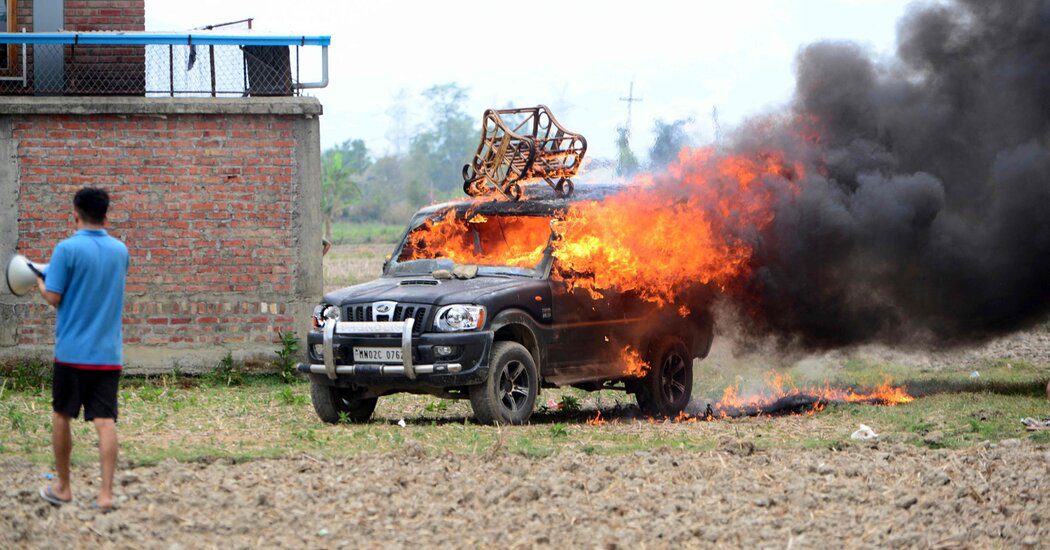Global Courant 2023-05-06 19:02:25
Clashes between rival ethnic groups in Manipur, a remote state in northeastern India, have reportedly killed dozens in recent days. of information.
The unrest, which began Wednesday, stemmed from a dispute over who can claim special tribal status that grants extra privileges. The largest group in the state, just over half of the population, seeks that designation for itself.
On Thursday, violence had reached an extraordinary level, as people set fire to houses and vehicles, churches and temples. There is no government confirmation of a widely reported death toll Indian news broadcasts as more than 50, although one official, asking for anonymity because he was not authorized to confirm a figure, described it as accurate.
In response, the Indian army has flown nearly 10,000 troops and paramilitary troops to Manipur, a state of less than 3 million people near the border with Bangladesh and Myanmar, more than 1,600 kilometers from New Delhi.
On Friday, the state governor issued “shoot-on-sight” orders, authorizing security forces to fire into crowds “in extreme cases”. It is not clear if they did and if this is one of the reasons 54 dead which has been counted in three different hospitals according to Indian news outlets.
A military spokesman said Friday evening that they had gained “firm control” over the most affected districts. But as authorities have also shut down the internet, imposed a curfew and canceled trains to the region, it’s impossible to say whether this is true.
Paojel Chaoba, the editor in chief of The Manipur border, a local news site, described a “total breakdown of law and order” the likes of which it had never seen before in Manipur. “The home of the top police officer in the state has been attacked and the death toll continues to rise,” he said in a telephone interview.
Thousands of Manipuris have fled, many heading west to the neighboring state of Assam, a police inspector there told a Indian news channel.
Some were left behind, such as Lenkhohao, a 60-year-old Kuki chief who is in charge of an 80-household village in Churachandpur district.
“I’ve never seen anything like it,” he said in a phone interview, adding that gunshots could be heard all day Friday, as well as the sound of wandering crowds of people. That night, he said, a group of about 200 Meiteis, accompanied by Manipur police officers driving jeeps, carried out an attack on his village.
“We only had four or five guns, but they had many more. We fired a lot of shots in both directions and ran for cover in the rice paddies,” said Mr. Lenkhohao, who uses only one name. “But we fought back fiercely and they were forced to retreat.”
He said at least four people had been killed in a neighboring village.
Northeast India is a patchwork of groups, differing in language and religion, often at odds with each other and with the national government over internal borders and human rights issues.
The recent unrest began when a student group staged a march to protest efforts to reclassify Meiteis, the state’s largest ethnic group, as a “scheduled tribe.” Currently, only the Naga and Kuki peoples of the state, who inhabit the rugged hill country, enjoy this designation, which gives an advantage in securing government jobs, among other things.
A group representing the Meiteis had petitioned for scheduled tribe status more than 10 years ago. Last month, Manipur’s Supreme Court issued a ruling noting the long delay and giving the state government just four weeks to recommend a plan to the national government.








